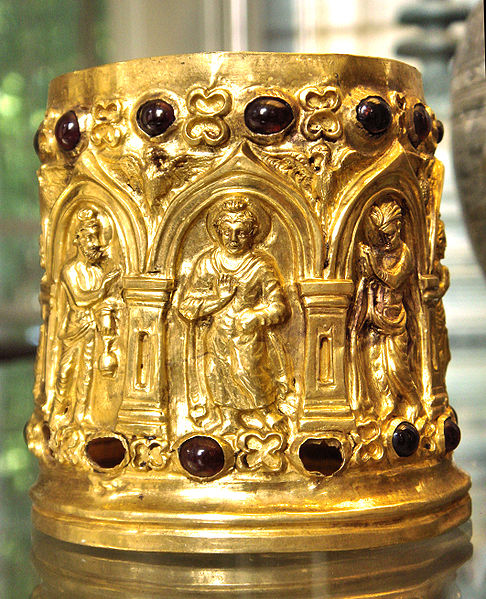Ānanda was the primary attendant of the Buddha and one of his ten principal disciples. Among the Buddha's many disciples, Ānanda stood out for having the best memory. Most of the texts of the early Buddhist Sutta-Piṭaka are attributed to his recollection of the Buddha's teachings during the First Buddhist Council. For that reason, he is known as the Treasurer of the Dhamma, with Dhamma referring to the Buddha's teaching. In Early Buddhist Texts, Ānanda was the first cousin of the Buddha. Although the early texts do not agree on many parts of Ānanda's early life, they do agree that Ānanda was ordained as a monk and that Puṇṇa Mantānīputta became his teacher. Twenty years in the Buddha's ministry, Ānanda became the attendant of the Buddha, when the Buddha selected him for this task. Ānanda performed his duties with great devotion and care, and acted as an intermediary between the Buddha and the laypeople, as well as the saṅgha. He accompanied the Buddha for the rest of his life, acting not only as an assistant, but also a secretary and a mouthpiece.

Head of Ānanda, once part of a limestone sculpture from the northern Xiangtangshan Caves. Northern Qi dynasty, 550–577 CE.
Chinese statue, identified as likely being Ānanda
18th-century Burmese sculpture of Ānanda
Sculpture of Ānanda from Wat Khao Rup Chang, Songkhla, Thailand
Siddhartha Gautama, most commonly referred to as the Buddha, was a wandering ascetic and religious teacher who lived in South Asia during the 6th or 5th century BCE and founded Buddhism. According to Buddhist legends, he was born in Lumbini, in what is now Nepal, to royal parents of the Shakya clan, but renounced his home life to live as a wandering ascetic. Buddhists believe that after leading a life of mendicancy, asceticism, and meditation, he attained nirvana at Bodh Gaya in what is now India. The Buddha then wandered through the lower Indo-Gangetic Plain, teaching and building a monastic order. Buddhist tradition holds he died in Kushinagar and reached parinirvana, final nirvana.
Statue of the Buddha, preaching his first sermon at Sarnath. Gupta period, c. 5th century CE. Archaeological Museum Sarnath (B(b) 181).
The Buddha, Tapa Shotor monastery in Hadda, Afghanistan, 2nd century CE
One of the earliest anthropomorphic representations of the Buddha, here surrounded by Brahma (left) and Śakra (right). Bimaran Casket, mid-1st century CE, British Museum.
Māyā miraculously giving birth to Siddhārtha. Sanskrit, palm-leaf manuscript. Nālandā, Bihar, India. Pāla period








